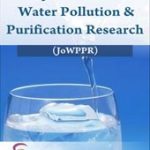
Peremobowei Beldin Kpikpi,

Onome Augustina Bubu-Davies,

Erema R. Daka,
- Lecturer II, Department of Fisheries and Aquatic Environment, Rivers State University, Nkpolu-Oroworukwo, Port Harcourt, Nigeria
- Professor, Department of Fisheries and Aquatic Environment, Rivers State University, Nkpolu-Oroworukwo, Port Harcourt, Nigeria.
- Professor, Animal and Environmental Biology, Rivers State University, Nkpolu-Oroworukwo, Port Harcourt, Nigeria
Abstract document.addEventListener(‘DOMContentLoaded’,function(){frmFrontForm.scrollToID(‘frm_container_abs_111039’);});Edit Abstract & Keyword
The increasing contamination of the environment by microplastics (MP) in various forms is a consequence of modern lifestyle advancements and has emerged as a significant environmental hazard. The digestive tracts of 36 specimens of the economic mullet (Mugil cephalus) were investigated between March 2022 and March 2023 from the lower Forcados River, Burutu, Delta State, Nigeria. A total of 96 MP particles were extracted from 18 fish out of the total samples. Among the examined species, three types of microplastics were identified in Mugil cephalus: microfibres (76, 79.16%), microfragments (6, 6.25%), and pellets (14, 14.58%). Distribution across the digestive tract revealed 16 microplastics (16.67%) in the oesophagus, 30 (31.25%) in the gills, and 50 (52.08%) in the stomach. The highest concentration of ingested microplastics was found in the form of microfibres (4.17 ± 0.71) recovered from the stomach, while the least were micro pellets (0.00 ± 0.00) retrieved from the oesophagus. These differences were statistically significant (p < 0.05). The findings demonstrate that, compared to other sections, the stomach of Mugil cephalus had the highest concentration of fiber-ingested microplastic pollutants. Due to concerns about potential harm to fish well-being and the risk of biomagnification, the widespread prevalence of microfiber contamination in mullet underscores the need for biomonitoring of microplastics in both inland and coastal waters, regardless of the accumulation pathway. This study serves as a benchmark for future research.
Keywords: Aquatic wastes, Delta State, diet, Forcados river, microplastics, mullet
[This article belongs to Journal of Water Pollution & Purification Research (jowppr)]
Peremobowei Beldin Kpikpi, Onome Augustina Bubu-Davies, Erema R. Daka. Microplastics Contaminated Mullet (Mugil cephalus) (Linnaeus, 1758) from the Lower Forcados River, Burutu, Delta State, Nigeria. Journal of Water Pollution & Purification Research. 2024; 11(03):29-37.
Peremobowei Beldin Kpikpi, Onome Augustina Bubu-Davies, Erema R. Daka. Microplastics Contaminated Mullet (Mugil cephalus) (Linnaeus, 1758) from the Lower Forcados River, Burutu, Delta State, Nigeria. Journal of Water Pollution & Purification Research. 2024; 11(03):29-37. Available from: https://journals.stmjournals.com/jowppr/article=2024/view=0
References
document.addEventListener(‘DOMContentLoaded’,function(){frmFrontForm.scrollToID(‘frm_container_ref_111039’);});Edit
- Auta, H.S., Emenike, C.U., Fauziah, S.H. 2017. Distribution and importance of microplastics in the marine environment: A review of the sources, fate, effects, and potential solutions. Environment International, 102 :165–176.
- Murphy, F., Ewins, C., Carbonnier, F. Quinn, B. 2016. Wastewater treatment works (WwTW) as a source of microplastics in the aquatic environment. Sci. Technol. 50 (11), 5800-5808.
- Alomar, C., Estarellas, F. Deudero, S. 2016. Microplastics in the Mediterranean Sea: deposition in coastal shallow sediments, spatial variation and preferential grain size. Mar. Res. 115, 1–10.
- 2016. “Sources, fate and effects of microplastics in the marine environment: part two of a global assessment” (Kershaw, P.J., and Rochman, C.M., eds). (IMO/FAO/UNESCOIOC/ UNIDO/WMO/IAEA/UN/UNEP/UNDP Joint Group of Experts on the Scientific Aspects of Marine Environmental Protection). Rep. Stud. GESAMP, 93, 220.
- Gallagher, A. Rees, A. Rowe, R. Stevens, J. Wright, P. 2015. Microplastics in the Solent estuarine complex, UK: an initial assessment. Pollut. Bull., 102, 2, 243-249.
- Lusher, A.L. Tirelli, V., O’Connor, I. Officer, R. 2015. Microplastics in Arctic polar waters: the first reported values of particles in surface and sub-surface samples. Rep. 5: 14947.1-11.
- Vaitheeswaran, T., Malathi, S. Felix, S. 2016. Studies on length-weight relationship of Mugil cephalus (Linnaeus, 1758), (Family: Mugilidae) Chennai coast of Tamil Nadu. International Journal of Fisheries and Aquatic Studies. 4 (4):04-07.
- Kpikpi, P. B. (2023). Determination of microbiological load in Periwinkle (Tympanotonos fuscatus), water and sediment of Azubie/woji creek, Port Harcourt, Nigeria. Singapore J. Sci. Res., 13 (1): 37-47.
- Barnes, D. K. Galgani, F. Thompson, R.C. Barlaz, M. 2009. Accumulation and fragmentation of plastic debris in global environments. Trans. R. Soc. Lond. B Biol. Sci. 364, 1985–1998.
- Zarfl, C., Matthies, M. 2010. Are marine plastic particles transport vectors for organic pollutants to the Arctic? Marine Pollution Bulletin. 60 (10), 1810–1814.
- Barnes, D.K.A. Milner, P. 2005. Drifting plastic and its consequences for sessile organism dispersal in the Atlantic Ocean. Marine Biology. 146 (4), 815–825.
- Mohamoud, H. H. Abd El-Kader, W. N. Salama, M. E. El-Dahhar, A. A. 2017. Feeding habits of wild and cultured Flathead grey mullet Mugil cephalus (Linnaeus, 1758) and thin lip grey mullet Liza ramada (Risso, 1826) in EGYPT. Journal of the Arabian Aquaculture Society. 12 (1): 113-128.
- Naidoo, T. Smit, A.J. Glassom, D. 2016. Plastic ingestion by estuarine mullet Mugil cephalus (Mugilidae) in an urban harbour, KwaZulu-Natal, South Africa. J. Mar. Sci., 38, 145–149.
- Akindele, E. O. Ehlers, S.M. Koop, H.E. 2020. Freshwater insects of different feeding guilds ingest microplastics in two Gulf of Guinea tributaries in Nigeria. Environmental Science and Pollution Research. 27, 33373–33379.
- Adeogun, A. O. Ibor, O. R., Khan, E. A. Azubuike V. Chukwuka, A. V. Omogbemi, E. D. Arukwe, A. 2020. Detection and occurrence of microplastics in the stomach of commercial fish species from a municipal water supply lake in southwestern Nigeria. Environmental Science and Pollution Research. 27:31035–31045.
- Jabeen, K. Su, L. Li, J. Yang, D. Tong, C. Mu, J. Shi, H. 2017. Microplastics and mesoplastics in fish from coastal and fresh waters of China. Environmental Pollution, 221: 141–149.
- Li, J. Yang, D. Li, L. Jabeen, K. Shi, H. 2015. Microplastics in commercial bivalves from China. Pollut. 207, 190–195.
- Abbasi, S. Soltani, N. Keshavarzi, B. Moore, F., Turner, A. Hassanaghaei, M. 2018. Microplastics in different tissues of fish and prawn from the Musa Estuary, Persian Gulf. Chemosphere. 205:80–87.
- Zhang, C. Zhou, H., Cui, Y. Wang, C., Li, Y. Zhang, D. 2019. Microplastics in offshore sediment in the Yellow Sea and East China Sea, China. Pollut. 244, 827–833.
- Cole, M. Lindeque, P. Halsband, C. Galloway, T. S. 2011. Microplastics as contaminants in the marine environment: a review. Marine Pollution Bulletin, 62: 2588–2597.
- Li, J. Qu, X. Su, L. Zhang, W. Yang, D. Kolandhasamy, P. Li, D. Shi, H. 2016. Microplastics in mussels along the coastal waters of China. Pollut. 214, 177–184.
- Lusher, A.L. Welden, N.A. Sobral, P., Cole, M., Blackford, J. Lewis, C. Lenton, T.M. Galloway, T.S. Robbens, J. Huvet, A. Zambonino-Infante, J. Paul-Pont, I. Huvet, A. Soudant, P. Reifferscheid, G. 2017. Sampling, isolating and identifying microplastics ingested by fish and invertebrates. Analytical Methods, 9(9), 1346–1360.
- Claessens, M. De Meester, S. Van Landuyt, L. De Clerck, K. Janssen, C.R. 2011. Occurrence and distribution of microplastics in marine sediments along the Belgian coast. Pollut. Bull. 62 (10), 2199–2204.
- Laermanns, H. Reifferscheid, G. Kruse, J. Földi, C. Dierkes, G. Schaefer, D. Scherer, C. Bogner, C. Stock, F. 2021. Microplastic in Water and Sediments at the Confluence of the Elbe and Mulde Rivers in Germany. Environ. Sci., 9:794895; 1-11.
- Baalkhuyur, F.M. Dohaish, E.A.B. Elhalwagy, M.E.A. Alikunhi, N.M. AlSuwailem, A. M. Røstad, A. Coker, D.J. Berumen, M.L. Duarte, C. M. 2018. Microplastic in the gastrointestinal tract of fishes along the Saudi Arabian Red Sea coast. Pollut. Bull. 131, 407–415.
- Gundogdu, S. Cevik, C. Temizatas, N. 2020. Occurrence of microplastics in the gastrointestinal tracts of some edible fish species along the Turkish coast. Turkish Journal of Zoology. 44: 312 -323.
- Fareza, A. A. Sembiring, E. 2020. Occurrence of microplastics in water, sediment and milkfish (Chanos chanos) in Citarum River downstream (Case Study: Muara Gembong). E3S Web of Conference. 148, 07005, 1-5.
- Browne, M.A. Dissanayake, A. Galloway, T. S. Lowe, D. M. Thompson, R. C. 2008. Ingested microscopic plastic translocates to the circulatory system of the mussel, Mytilus edulis (L.). Environmental Science & Technology, 42: 5026–5031.
- Von Moos, N. Burkhardt-Holm, P. Keohler, A. 2012. Uptake and effects of microplastics on cells and tissue of the blue mussel Mytilus edulis L. after an experimental exposure. Environ. Sci. Technol. 46, 11327 – 11335.
- Bellido, J.M. Brown, Æ.A.M., Valavanis, V.D., Gira, Æ.A., Pierce, G.J., Iglesias, Æ.M. & Palialexis, A. 2008. Identifying essential fish habitat for small pelagic species in Spanish Mediterranean waters. In: Essential Fish Habitat Mapping in the Mediterranean. Springer, Dordrecht,171–184.

Journal of Water Pollution & Purification Research
| Volume | 11 |
| Issue | 03 |
| Received | 07/10/2024 |
| Accepted | 15/10/2024 |
| Published | 04/11/2024 |
function myFunction2() {
var x = document.getElementById(“browsefigure”);
if (x.style.display === “block”) {
x.style.display = “none”;
}
else { x.style.display = “Block”; }
}
document.querySelector(“.prevBtn”).addEventListener(“click”, () => {
changeSlides(-1);
});
document.querySelector(“.nextBtn”).addEventListener(“click”, () => {
changeSlides(1);
});
var slideIndex = 1;
showSlides(slideIndex);
function changeSlides(n) {
showSlides((slideIndex += n));
}
function currentSlide(n) {
showSlides((slideIndex = n));
}
function showSlides(n) {
var i;
var slides = document.getElementsByClassName(“Slide”);
var dots = document.getElementsByClassName(“Navdot”);
if (n > slides.length) { slideIndex = 1; }
if (n (item.style.display = “none”));
Array.from(dots).forEach(
item => (item.className = item.className.replace(” selected”, “”))
);
slides[slideIndex – 1].style.display = “block”;
dots[slideIndex – 1].className += ” selected”;
}
